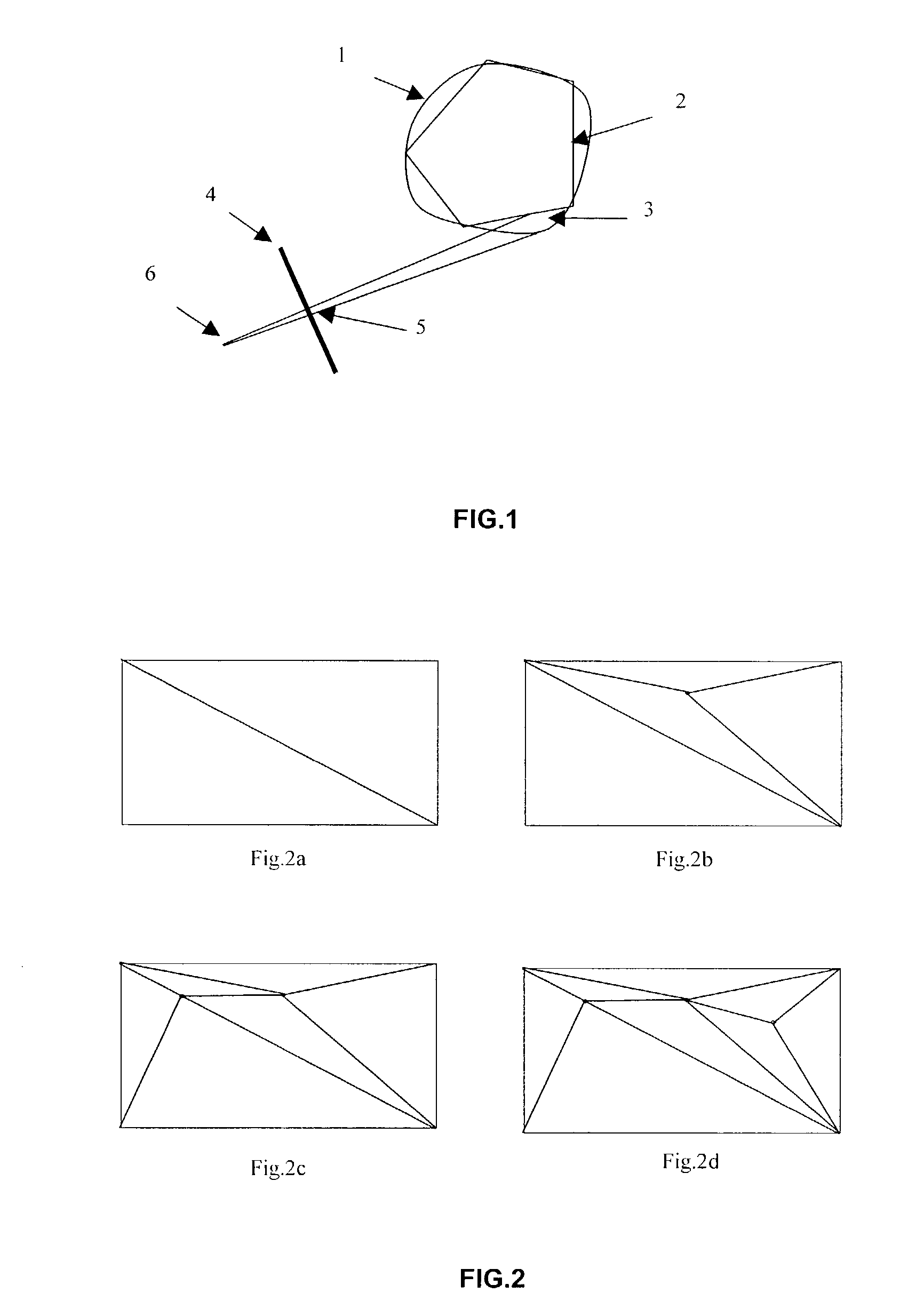Process for modelling a 3D scene
a 3d scene and process technology, applied in the field of 3d scene modelling process, can solve the problems of large information required in defining the model or representation cost, the quality of the reconstructed model is not homogeneous, and the modelling cost is not uniform, so as to achieve the effect of reducing the cost of reconstructed models, and simplifying the depth map
- Summary
- Abstract
- Description
- Claims
- Application Information
AI Technical Summary
Benefits of technology
Problems solved by technology
Method used
Image
Examples
Embodiment Construction
[0037]FIG. 3 represents the error in the synthesized image, resulting from the error of approximation of the surface of the 3D object, this approximation corresponding to the facetization of the depth map of the reference image, reference 7. The depth approximation error, referenced 3, is conveyed, for a lateral view from a viewpoint J, by a 2D distortion error referenced 5.
[0038]The idea is to take into account this distortion error in a 2D image for known viewpoints J or arbitrarily defined viewpoint. The quantity of these viewpoints must be sufficient to correspond to a representative sample. A maximum error is defined at the level of the 2D image which corresponds to the maximum tolerance of distortion of the image.
[0039]The objective is to model the depth map of the reference image 7 while limiting the distortion which this modelling will engender in the images for the viewpoints J. To do this, at all points of the reference image 7 we shall calculate the minimum and maximum va...
PUM
 Login to View More
Login to View More Abstract
Description
Claims
Application Information
 Login to View More
Login to View More - R&D
- Intellectual Property
- Life Sciences
- Materials
- Tech Scout
- Unparalleled Data Quality
- Higher Quality Content
- 60% Fewer Hallucinations
Browse by: Latest US Patents, China's latest patents, Technical Efficacy Thesaurus, Application Domain, Technology Topic, Popular Technical Reports.
© 2025 PatSnap. All rights reserved.Legal|Privacy policy|Modern Slavery Act Transparency Statement|Sitemap|About US| Contact US: help@patsnap.com



